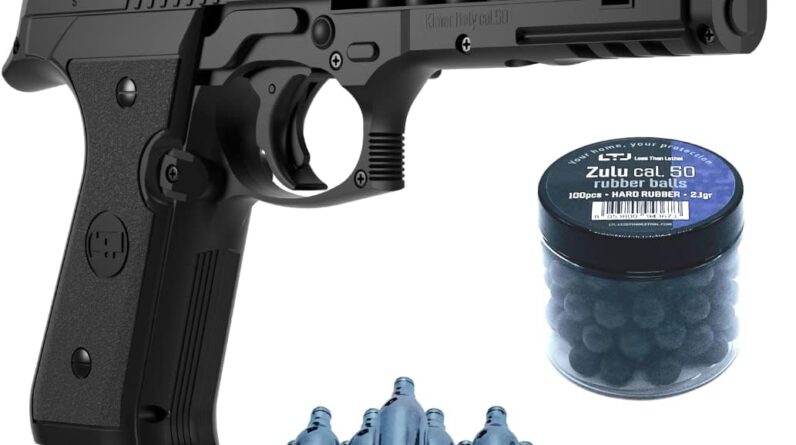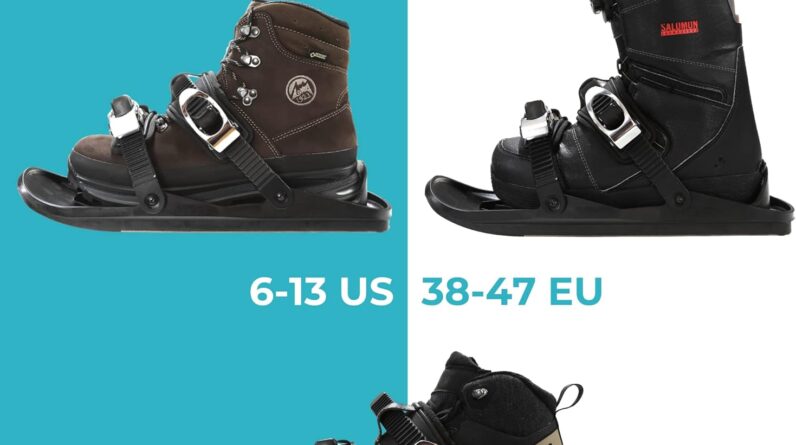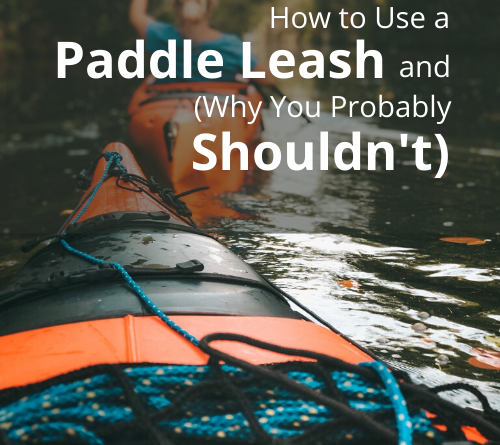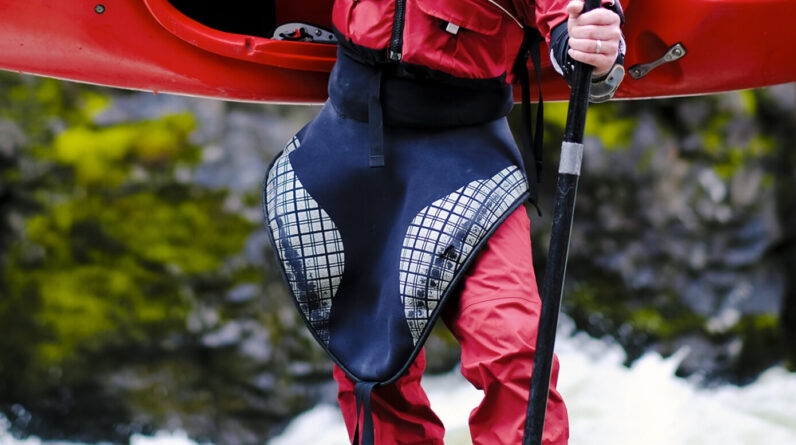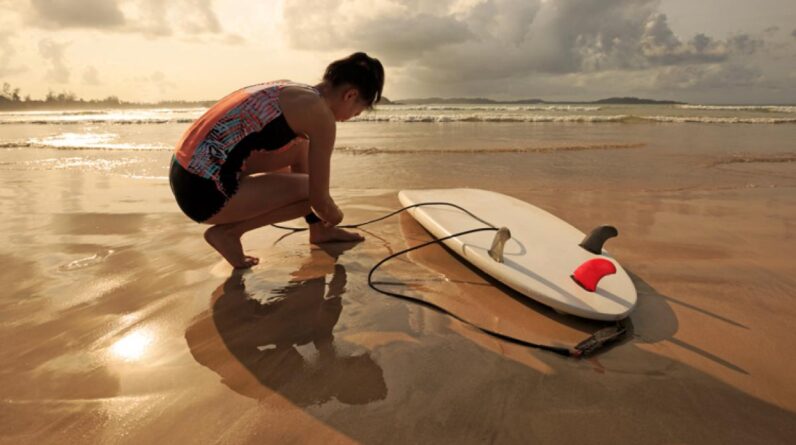
Picture this: You’re standing on the golden sandy beach, the sun warming your skin, as you watch the waves crashing against the shoreline. You can hear the laughter of other surfers in the distance and feel the anticipation building inside you. But before you can jump into the exhilarating world of longboard surfing, there’s one important decision to make – choosing the perfect surfboard leash. This guide will help you navigate the world of surfboard leashes, so you can ride those waves with confidence and style.
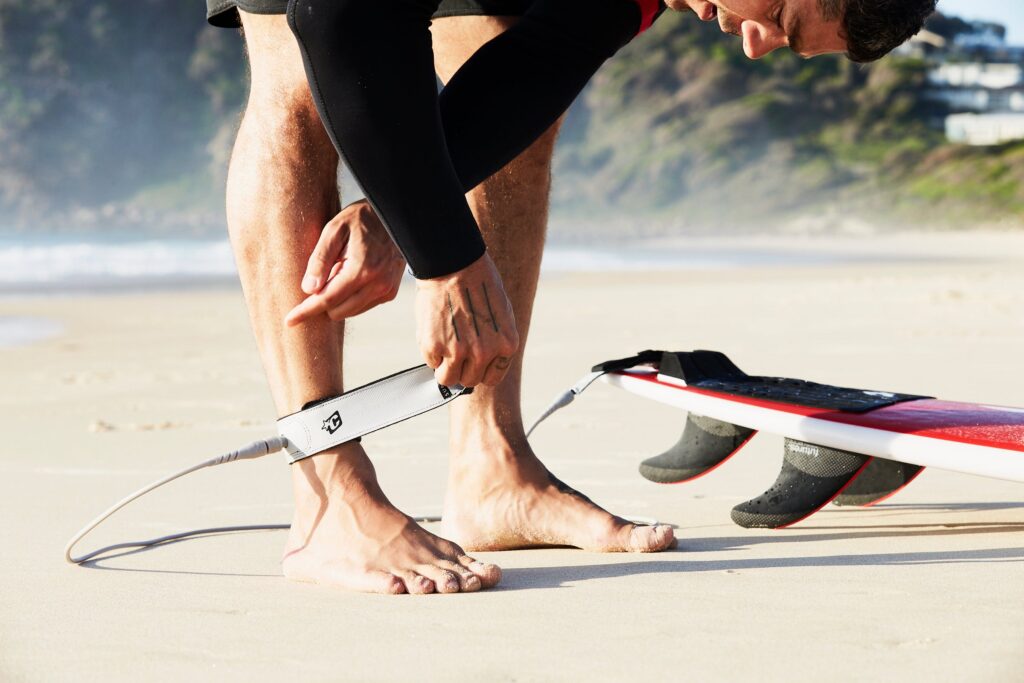
This image is property of creatures.com.au.
Surfboard Leash Materials
When it comes to surfboard leashes, there are two main materials that are commonly used: neoprene and urethane. Neoprene leashes are popular due to their flexibility and comfortable feel on your ankle. They are also known for their durability and ability to withstand the harsh conditions of the ocean. Urethane leashes, on the other hand, are known for their strength and ability to absorb the shock of big waves. They provide a more rigid feel compared to neoprene leashes, which some surfers prefer. Ultimately, the choice between neoprene and urethane comes down to personal preference and the specific conditions you will be surfing in.
Coiled or Straight Leashes
Another important consideration when choosing a surfboard leash is whether you prefer a coiled or straight leash. Coiled leashes are great for giving you that extra bit of freedom to move around on your board. They have a spring-like coil that eliminates any excess slack and prevents the leash from dragging in the water. This is particularly useful for longboard surfing, as it allows you to maneuver the board without any hindrance. On the other hand, straight leashes are more traditional and provide a direct connection between you and your board. They are generally lighter and offer less resistance in the water. The choice between a coiled or straight leash comes down to personal preference and the specific type of surfing you will be doing.
Length of Leash
The length of your surfboard leash is an important factor to consider. It is crucial to choose a leash that is appropriate for the size of your surfboard. If the leash is too short, it can restrict your movements and make it difficult to navigate the waves effectively. On the other hand, if the leash is too long, it can become a safety hazard and get tangled in your feet or other surfers. In general, for longboard surfing, it is recommended to choose a leash that is equal to or slightly longer than the length of your board. This will give you enough freedom to maneuver the board without any hindrance.
In addition to considering the length of your surfboard, it is also important to factor in the surfing conditions. If you are planning to surf in bigger waves, you may want to opt for a slightly longer leash to give you more room to maneuver. Conversely, if you are surfing in smaller and less powerful waves, a slightly shorter leash may be more appropriate. It’s important to find the right balance that allows you to surf comfortably and safely in the given conditions.
Ultimately, the length of your leash is a personal preference. Some surfers may prefer a shorter leash for a more direct connection to the board, while others may prefer a longer leash for added freedom of movement. Experimenting with different leash lengths can help you find the perfect balance that suits your surfing style and preferences.
Thickness of Leash
The thickness of your surfboard leash can play a significant role in its performance and durability. Standard thickness leashes are typically around 7mm and are suitable for all types of surfing conditions. They offer a good balance between flexibility and strength, making them a popular choice among surfers. If you are looking for added strength and durability, you may want to consider investing in an extra thick leash. These leashes are usually around 8-9mm and are designed to handle more powerful waves and rough conditions. While they may be slightly less flexible than standard thickness leashes, they provide added peace of mind in challenging surfing conditions.
When determining the thickness of your leash, it is important to consider the type of waves you will be surfing and your own personal strength and preferences. If you are surfing in small to medium-sized waves and prefer a more flexible leash, a standard thickness leash should suffice. However, if you are tackling larger waves or prefer the added security of a thicker leash, opting for an extra thick leash would be a wise choice. Ultimately, choosing the right thickness comes down to finding the right balance between flexibility and strength for your specific needs.

This image is property of cdn.shopify.com.
Swivel and Pivot Points
The swivel and pivot points on a surfboard leash play a crucial role in preventing tangling and ensuring smooth movements in the water. A leash without proper swivel and pivot points can restrict your movement and cause unnecessary drag. It is therefore important to choose a leash that has a reliable swivel system.
A 360-degree swivel system is essential for reducing tangling and allowing you to freely move around on your board. This feature ensures that the leash does not get twisted up during maneuvers or wipeouts, providing you with peace of mind and uninterrupted surfing sessions. Look for leashes that have multiple swivel points to maximize the effectiveness of the system.
Some leashes even offer double or triple swivel systems, which provide an extra layer of protection against tangling. These leashes are particularly useful for surfers who perform advanced maneuvers or ride in powerful waves, as they offer additional flexibility and freedom of movement.
Cuff Design
The cuff design of a surfboard leash is another important factor to consider when choosing the right leash for longboard surfing. The cuff is the part of the leash that attaches to your ankle or calf, and it plays a crucial role in providing comfort and security while you are out on the water.
A padded cuff is a popular choice among surfers due to its comfortable feel on the ankle. The padding helps to distribute the pressure evenly and reduces the risk of chafing or discomfort during long surfing sessions. Padded cuffs are particularly advantageous for longboard surfing, as they provide extra comfort and support during those extended rides.
When it comes to the closure system, you have the option of choosing between Velcro or buckle closures. Velcro closures are convenient and easy to use, allowing for quick adjustments and secure attachment to your ankle. However, over time, the Velcro may lose its strength and durability. Buckle closures, on the other hand, offer a more secure and durable option. Once adjusted to the perfect fit, buckle closures provide a reliable and strong connection between your ankle and the leash.
In addition to considering the design and closure system of the cuff, it is also important to choose a cuff size that fits comfortably around your ankle. A cuff that is too tight can cause discomfort, while a cuff that is too loose can affect the performance of your leash. When trying on different cuffs, make sure to find one that provides a snug and secure fit without restricting your movements.
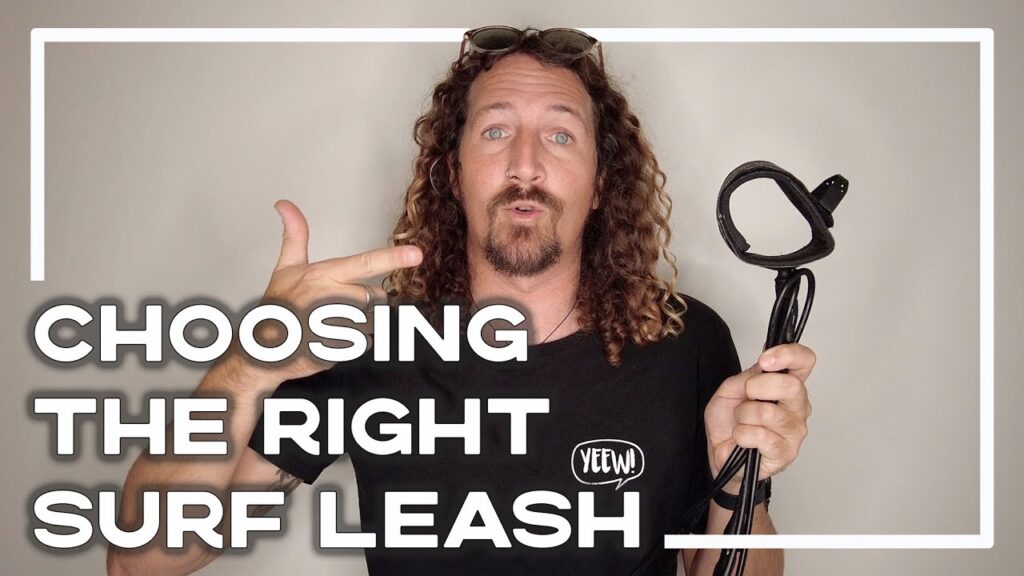
This image is property of i.ytimg.com.
Quality of Velcro
The quality of the Velcro used in your surfboard leash can greatly impact its longevity and performance. Strong and durable Velcro is essential for ensuring that the leash stays securely attached to your ankle throughout your entire surfing session. The last thing you want is for the Velcro to fail, causing you to lose your board or becoming a safety hazard in the water.
When choosing a leash, look for ones that use high-quality Velcro closures. These leashes are designed to withstand the rigors of surfing and provide a reliable connection between your ankle and the leash. Additionally, some leashes offer double or triple wrap Velcro closures, which provide extra security and ensure that the leash stays firmly in place.
As with any piece of equipment, it is important to take care of your surfboard leash to prolong its lifespan. Regularly rinsing the leash with freshwater after each surfing session can help remove any salt or debris that could potentially damage the Velcro. Proper storage and avoiding excessive exposure to direct sunlight can also contribute to the longevity of the Velcro.
Keyhole or Rail Saver
A crucial component of any surfboard leash is the keyhole or rail saver. This is the section of the leash that attaches to the leash plug on your surfboard. Its purpose is to protect your surfboard’s rail from excessive wear and tear caused by the leash rubbing against it.
The keyhole or rail saver is typically made from a strong material such as nylon or polyurethane, which can withstand the constant friction between the leash and the surfboard. When choosing a leash, look for one that has a durable and well-designed keyhole or rail saver.
Having a reliable keyhole or rail saver is particularly important for longboard surfing, as longer boards tend to have larger surface areas for the leash to rub against. By protecting the rail of your surfboard, you can ensure its longevity and maintain its performance over time.

This image is property of www.surfertoday.com.
Leash Thickness and Strength
Choosing the right thickness and strength of your surfboard leash is crucial for your safety and the protection of your surfboard. It is important to select a leash that is appropriate for the type of surfing you will be doing and the conditions you will be facing.
When it comes to thickness, consider the size of the waves you will be surfing. If you primarily surf in small to medium-sized waves, a standard thickness leash should suffice. Standard thickness leashes are generally around 7mm and provide a good balance between flexibility and strength. They are suitable for most surfing conditions and offer a reliable connection between you and your board.
On the other hand, if you plan on tackling larger waves or surfing in more challenging conditions, you may want to consider an extra thick leash. Extra thick leashes are typically around 8-9mm and provide added strength and durability. They are designed to withstand the force and impact of bigger waves, giving you peace of mind while you’re out in the water.
Strength and durability are also important factors to consider when it comes to the overall quality of your leash. Look for leashes that are made from high-quality materials and have reinforced stitching. This will ensure that your leash can handle the demands of surfing and withstand the test of time.
Detachable or Fixed Leashes
When choosing a surfboard leash for longboard surfing, you have the option of going with either a detachable leash or a fixed leash. Each option has its own benefits and drawbacks, so it’s important to consider your own preferences and the type of surfing you will be doing.
Detachable leashes are popular among surfers who like the freedom of being able to quickly detach their leash from the board. This can be advantageous when practicing advanced maneuvers or when the leash is hindering your movements. Detachable leashes also provide the option of using different lengths of leash depending on the conditions you will be surfing in.
However, detachable leashes do come with a few drawbacks. They can be more prone to getting tangled or twisted during surfing sessions, which can be frustrating and time-consuming to untangle. Additionally, there is always the risk of forgetting to reattach the leash after a wipeout, which can lead to a dangerous situation in the water.
Fixed leashes, on the other hand, offer a more traditional and reliable option. Once attached to your board, they provide a constant connection that you don’t have to worry about detaching or reattaching. They are generally less prone to tangling and provide a secure and consistent connection between you and your board.
However, fixed leashes come with their own set of drawbacks as well. They can restrict your movements slightly more compared to detachable leashes, as you are constantly connected to your board. This may not be ideal for certain surfing maneuvers or for surfers who prefer a more unrestricted feel.
Ultimately, the choice between a detachable leash and a fixed leash comes down to personal preference and the type of surfing you will be doing. If you value the freedom to detach your leash when needed and have different length options, a detachable leash may be the way to go. If you prefer a more traditional and reliable connection between you and your board, a fixed leash may be the better choice.

This image is property of www.stokedfortravel.com.
Budget Considerations
When it comes to choosing the perfect surfboard leash for longboard surfing, budget considerations are an important factor for many surfers. While it’s tempting to go for the cheapest option available, it’s important to find the right balance between cost and quality.
Finding a leash that fits within your budget while still meeting your needs and providing good quality is crucial. Cheaper leashes may save you money initially, but they may not last as long or offer the same level of performance as higher-quality leashes. Investing in a higher-quality leash may save you money in the long run as you won’t have to replace it as frequently.
Consider your own surfing habits and how often you plan on using the leash. If you are a frequent surfer who spends a lot of time in the water, it may be worth investing in a higher-quality leash that can withstand the demands of regular use. However, if you are an occasional surfer or just getting started, a more budget-friendly option may be suitable.
It’s also worth considering the reputation and customer reviews of the leash brand you are considering. Look for brands that are known for their quality and durability, as they are more likely to provide a reliable leash that will stand the test of time.
Finding the right balance between cost and quality is important when choosing a surfboard leash. While it may be tempting to opt for the cheapest option available, investing in a higher-quality leash may save you money in the long run and provide a better overall surfing experience.
Long-Term Investment
Choosing the perfect surfboard leash for longboard surfing is not just about finding the right leash for your current surfing needs. It’s also about making a long-term investment that will provide you with years of reliable performance and enjoyment.
When selecting a surfboard leash, consider factors such as durability, quality of materials, and reputation of the brand. High-quality leashes are designed to withstand the rigors of surfing and offer superior durability compared to cheaper alternatives.
Taking care of your surfboard leash is also important for its long-term performance. Rinse the leash with freshwater after each surfing session to remove any salt or debris that could potentially damage it. Store it properly and avoid excessive exposure to direct sunlight, as this can weaken the materials over time.
By choosing a high-quality leash and taking proper care of it, you can ensure that it will provide you with many years of reliable service. This long-term investment will give you peace of mind while you’re out in the water and allow you to focus on what you love most – catching those perfect longboard waves.
In conclusion, choosing the perfect surfboard leash for longboard surfing requires careful consideration of various factors. From the material and length of the leash to the thickness and strength, each aspect plays a role in determining the overall performance and comfort of your surfing experience. Consider the specific conditions you will be surfing in and your own personal preferences to find the ideal leash that suits your needs. Remember to take care of your leash and make a long-term investment in a high-quality product that will provide you with years of enjoyable and safe surfing sessions. Happy surfing!


